Each month V.D. Kaviraj answers questions about plants and plant problems. Kaviraj is one of the foremost pioneers of Agro-homeopathy and author of the book, Homeopathy for Farm and Garden.
The completely revised and enlarged edition with an additional 176 pages is now available:
Send your questions! (with pictures when possible – JPG or GIF format) to [email protected] with the subject “Plant Doctor”.
Note: When I refer to treating plants with homeopathic remedies, this is the standard dosing procedure: Put 20 drops of a 6X potency in a litre of water. Succuss the bottle 50 times. Put this litre in the watering can,fill it up with 19 litres of tap water and stir. If the watering can is smaller, the amount of remedy put in must be proportionally smaller. Thus a 10 litre can needs only ½ litre and just 10 drops of the remedy. Apply the contents of the watering can to the roots of the plants to be treated. –V.D. Kaviraj
Hi Dr. Kaviraj.
Once again, thanks for all you do for our community! I recently had a nice success — after transplanting a rose it got very droopy and sad from the shock — Aconite perked it right up within a couple of hours!
Here’s my question about a beautiful but often difficult plant: the Camellia. Attached are photos of my camellia bush, in a prominent place by my front door. The bush has grown very nicely in this location, but always, after about a month after blooming, the flowers turn brown and many leaves yellow too. I understand this is probably a fungal problem. Does homeopathy provide an answer? Also, is this location too sunny? It’s in a “dappled” shade position. What you see here is probably the most sun it gets for about 3 hours. The rest of the day it’s more shady, but there’s always a bit of sun here and there. Does it need to be in full shade? Do you think this is part of the problem?
Thanks for any help!
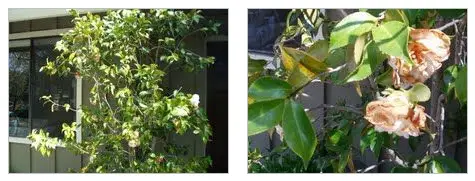
Hi Lansky,
This looks more like a phosphor problem. When plants flower, they use up a lot of phosphor, because they need it. So my suggestion is, considering the leaves are also somewhat pale, to use Ferrum phosphoricum. Send us photos of the result please.
————————————————————
Dear Dr. Kaviraj,
Not long ago you were asked a question concerning varroa mites and you suggested Pulsatilla for the bees. May I ask in what potency and what dosage? Varroa is destroying so many colonies here and I fear for my two a lot.
Thank you,
Inez
Hi Inez,
I would suggest the 6X or 6C, because then I reckon you have the best results. If you find varroa not much affected, you can follow up with Staphysagria, in the same potency.
————————————————————
Dear Kaviraj,
I have sown tomatoes and pepper, and would like to know if there is a way that makes the seeds germinate better and the young plants be strong. Also, I do not know how I should dose the remedies, if I only use a small 1 liter watering can. Would be very happy if you could help me.
Thank you
Melanie
Hi Melanie,
I hope you have not put them too close to each other, because they may infect each other with blight, both late and early. That said, use Ocimum basilicum for the tomatoes, single dose and with the peppers, you can use Chamomilla.
————————————————————
Dear Kaviraj,
I had problems last year with wire worm damage in my sweet potatoes. While preparing soil to plant today I unearthed a wire worm to make a remedy. What is the procedure for doing that? Thanks!
Barb
Hi Barb,
Much better is to use Phaseolus, because it will keep the wire worm off. Also, Sambucus nigra is excellent for that purpose as well as Thuja. I have noticed that making remedies from the pest itself usually has little or no effect. Either a plant-based remedy or a predator-based one will do the trick, so spare yourself the trouble.
————————————————————
Dear Dr. Kaviraj,
First of all I want to thank you for caring and sharing your expertise with us. I hope that your replies will be of great benefit to many. My questions are as follows: I intend to use Thuja for control of plum curculio. When is the best time to start with watering ? I could only get 30c Thuja potency, so how many drops do I use? Would aconite be recommended for the control of rust on blackberries? Also, have you any suggestions for controlling the excessive fruit drop on a plum tree?
Thanks,
Slavko Panezic
Hi Slavko,
The dosage is given at the top of the page. This is the same for all potencies we use. I suggest to also use Sambucus on some, so you have a comparison of which is the better remedy for next year.
————————————————————
Hello Dr. Kaviraj ,
First I congratulate and complement you for your noble work and pray god to continue it for all the time to come. I am sending a photograph. This Pairi mango tree was planted 27 yrs back (from seed) at my native Indore M.P. India in the back yard of our house (The city has Black cotten soil), and it never even flowered forget about fruit .
Homeopathy in last two years has made it flower this year.You can see the intensity of blossom in the photograph. The Fruits are also falling when getting pea size.
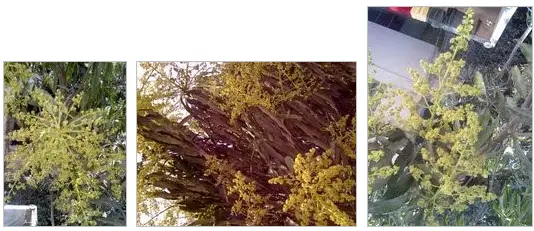
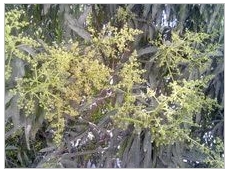
Now the only problem is there are aphid/mosquito like insect in hundreds. they move sideways very fast and hide on the other side of the spotter. They can be seen in the photos minutely. They are sapping all the florets and the florets dry out and fall down.
I also saw a few beetles and few borers. Please guide me for the remedies so that we can have mangoes. Can I repeat Silicea which I gave in Aug 2011?
I gave it Coccinella 200 (that was available) then Ricinus comm.30 on Feb 25 to 29 -2012, but till now there is no retreating. Please guide how to eradicate and save fruit from falling.
Vivek Joshi
Hi Vivek
If the insects move sideways, they are mites. They also cause very fine and not extensive webbing between branches and leaves. Amblyseius mckenzii is the remedy, available from www.considera.co.uk or from www.narayanaverlag.de
As to your mango tree, this is a matter of feeding the tree. Get a bunch of old cowdung cakes and spread around the base of the tree. Water the tree every day and the nutrients in the dung will feed the tree. You can also give a dose of Phosphorus.
————————————————————
Dr Kaviraj,
What can be used for this fungus disease that affects Soyabeans. Seen attached photos.
My gut feel tells me to use;
1. Chamomila ( to increase microbial life in the soil as they are the defense against Schlerotium – Streptomyces natural antibiotic ).
2. Carbo veg – for dying plant, for rots, as an anticeptic, stop edecay and putrefaction.
3. Calendula – as an anti septic and to restore vitality.
4. Silica – to dip the seeds before planting to prevent .
5. Biodynamic Equisetum tea and use of Equisetum in compost making ?
6. Salicylic acid – increase plant health.
Am I on the right track?
Can I mix it together, or apply each remedy on its own?
What would you suggest will be the best approach.
Extra info – Sambucus Nigra – As this plant grows in moist places, will this not help to strengthen the plants that are affected by the Sclerotiom disease ?
The soyas is irrigation soyas and GM soya. I have advised the farmer that GM is part of the problem, as it weakens the immune system of the plant and destroys the microflora of the soil – cause of imbalance soil flora.
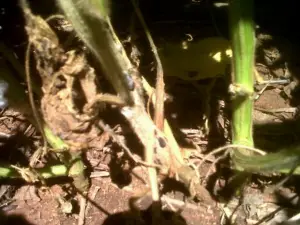
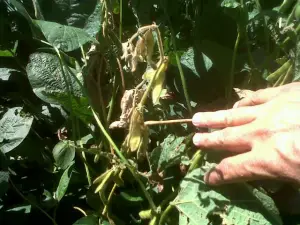
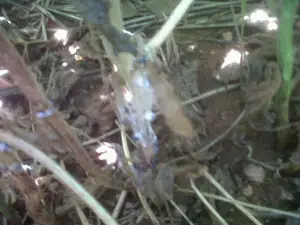
Regards
Tommie D.
Hi Tommie,
This is called stemrot and Silicea is the best remedy. You want to give far too many remedies. That will only confuse the plants and it will not improve. You must not think so much compartmentalised, but see things more systemic. Next year, soak the seeds in Silicea to prevent it and use Equisetum and Chamomilla in the compost. Keep Carbo veg at hand, just in case Silicea fails.




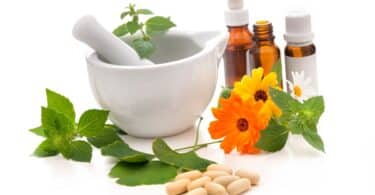

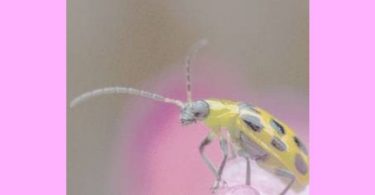
Thanks for the fine instructions.
Dr. Kaviraj: At the beginning of each newsletter you give directions to make a solution for treating plants, using 20 drops of 6X potency of the remedy in water. Would I be able to use the dry 6X pellets in water to make a solution? If so, what would be the ratio of pellets to water? Thanks so much for your help.
Yes you can use pellets or globules too. The best is to reserve them for pot plants. You can then crush some globules between 2 spoons and sprinkle the crumbs around the soil. Then you simply water the plant and it is done.
Hi, Dr. Kavi-raj –
I just absolutely positively love your website and your information.
You are a brilliant and awesome man.
Thank you so very much for all that you do to benefit others!
Thanks dear Barbara, it is high time we step away from the chemical war on bugs and diseases, because the art of war does not belong in medicine or in agriculture. The art of war belongs on battlefields.
So in the way we work, we must imitate nature and learn from her what solutions she offers. These we have to apply and then we see something happen that only occurs in natural settings. By using the remedies, we fool nature into believing everything is complete, while in reality we use the energy fields of that natural setting. Thus we use companion plants as remedies so it appears as if those plants were present, because the same reactions in the crop follow from the remedy, as well as from the plant itself.
If we have a pest, it tells us something is out of balance and a remedy made from the predator of the pest removes them as if by magic. That is because the predator is lacking. We see things is context and always systemic, in which every particular detail is but a reflection on the systemic view. Altogether the signs tell us what is out of balance and how to restore it. Mother Nature is the best teacher and she gives out all her secrets to her lovers. All she wants is attention from our part.
I was once asked by an opponent in a court case, what I had achieved with my incestuous relationship. My answer: “Much more than you will ever get by your 100s of years of raping her again and again.” That shut them up very well.
Thanks Partner!